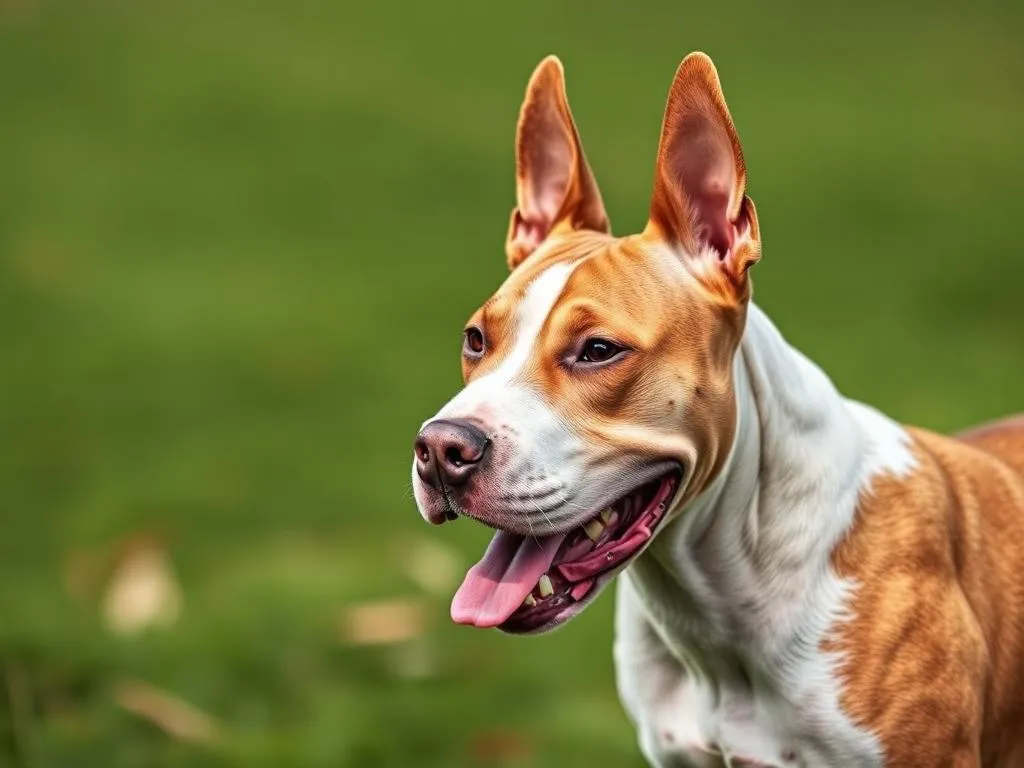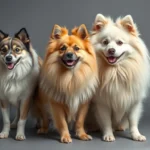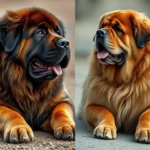
Introduction
Understanding different dog breeds is essential for potential pet owners. Each breed has unique characteristics, care needs, and suitability for different lifestyles. In this article, we will explore two closely related breeds: the Bull Terrier and the Mini Bull Terrier. These breeds share many similarities but also possess distinct traits that can influence your decision when choosing the right companion for your home.
Understanding the Breeds
Bull Terrier
History and Origins
The Bull Terrier originated in 19th century England, developed from a mix of bulldogs and terriers. Initially bred for bull-baiting, this breed transitioned to a companion dog as the practice was outlawed. The breed gained popularity for its distinctive appearance and playful nature, making them a beloved family pet.
Physical Characteristics
Bull Terriers are medium-sized dogs, typically weighing between 50 to 70 pounds and standing around 21 to 22 inches tall at the shoulder. They have a unique, egg-shaped head with a prominent jaw, which contributes to their distinctive look. Their coat is short, dense, and comes in various colors, including white, black, brindle, and combinations thereof.
Temperament
With a lively and playful disposition, Bull Terriers are known for their friendly nature and loyalty. They are highly energetic and require significant exercise and playtime. Socialization from an early age is crucial to ensure they develop into well-rounded adults, as they can be stubborn and strong-willed.
Mini Bull Terrier
History and Origins
The Mini Bull Terrier is a smaller version of the Bull Terrier, recognized in the late 20th century. While they share the same heritage, Mini Bull Terriers were specifically bred to produce a compact dog without sacrificing the breed’s characteristic features. They were developed primarily as companions, making them a popular choice for dog lovers who prefer smaller breeds.
Physical Characteristics
Mini Bull Terriers are significantly smaller than their standard counterparts, typically weighing between 25 to 35 pounds and standing about 10 to 14 inches tall. They possess the same egg-shaped head and muscular build as Bull Terriers, but in a more compact form. Their coat is also short and dense, available in similar colors to the standard breed.
Temperament
The temperament of Mini Bull Terriers mirrors that of Bull Terriers, characterized by their playful and affectionate nature. However, they may exhibit slightly different behavior due to their smaller size. They are just as energetic and require ample exercise, but their smaller stature may make them more adaptable to apartment living. Like their larger relatives, they need proper socialization and training to ensure good behavior.
Key Differences Between Bull Terriers and Mini Bull Terriers
Size and Physical Appearance
Comparison of Sizes
The most noticeable difference between Bull Terriers and Mini Bull Terriers is their size. Bull Terriers stand taller and are heavier, making them more robust. In contrast, Mini Bull Terriers are petite and can fit comfortably in smaller living spaces.
Body Structure and Features
While both breeds exhibit the same distinctive features, the proportions differ. Bull Terriers have a more elongated body structure, while Mini Bull Terriers are stout and compact. Despite their size difference, both breeds maintain the characteristic muscular build and egg-shaped heads.
Coat and Color Variations
Both breeds share similar coat types and color patterns. However, Mini Bull Terriers may display a wider variety of color combinations due to their breeding. Common colors include white, black, brindle, and fawn, with various markings that add to their unique appearance.
Temperament and Behavior
Energy Levels
Both breeds are highly energetic and thrive on physical activity. Bull Terriers may require more exercise due to their larger size and strength, while Mini Bull Terriers, although smaller, are equally playful and enjoy engaging activities. Owners should provide daily exercise to keep both breeds happy and healthy.
Trainability
When it comes to trainability, Bull Terriers and Mini Bull Terriers exhibit differences. Bull Terriers can be stubborn, requiring a firm and patient trainer. On the other hand, Mini Bull Terriers may be slightly more receptive to training due to their smaller size and adaptability. Both breeds benefit from positive reinforcement techniques.
Social Interaction
Both breeds are known for their friendly demeanor, making them excellent companions. However, Mini Bull Terriers might be more inclined to seek out human interaction due to their size, while Bull Terriers may display a more independent nature. Proper socialization is crucial for both breeds to ensure positive interactions with people and other pets.
Care Requirements
Exercise Needs
Daily Exercise Recommendations
Both Bull Terriers and Mini Bull Terriers require substantial daily exercise. A minimum of one hour of vigorous activity is recommended for Bull Terriers, while Mini Bull Terriers may thrive on 30 to 60 minutes of playtime. Activities such as walks, fetch, and agility training are excellent options for both breeds.
Impact of Size on Exercise
The size difference can affect the type of exercise each breed requires. Bull Terriers may need more space to run and play, making them better suited for homes with yards. In contrast, Mini Bull Terriers can adapt well to smaller living environments, provided they receive sufficient exercise.
Grooming Needs
Grooming Frequency
Both breeds have short coats that require minimal grooming. Weekly brushing is sufficient to remove loose hair and keep their coats healthy. However, Mini Bull Terriers may require slightly more frequent grooming due to their smaller size and propensity to collect dirt in smaller areas.
Health Considerations
Grooming is not just about aesthetics; it also impacts health. Regular grooming helps prevent skin issues and allows owners to check for any abnormalities. Both breeds are relatively low-maintenance in this regard, but owners should stay vigilant for common issues.
Diet and Nutrition
Dietary Needs
Both Bull Terriers and Mini Bull Terriers require high-quality dog food tailored to their size and activity level. A balanced diet rich in protein, fats, and essential vitamins will support their overall health. It’s crucial to choose food that meets the specific nutritional needs of each breed.
Portion Control
Due to their size difference, portion control varies significantly between the two breeds. Bull Terriers require larger portions compared to Mini Bull Terriers. Owners should consult feeding guidelines based on their dog’s weight, age, and activity level to maintain a healthy weight for both breeds.
Health Considerations
Common Health Issues
Bull Terrier Health Concerns
Like all breeds, Bull Terriers are prone to certain health issues. Common concerns include skin allergies, heart conditions, and deafness. Regular veterinary check-ups and a healthy diet can help mitigate these risks.
Mini Bull Terrier Health Concerns
Mini Bull Terriers face some unique health challenges, including patellar luxation and dental issues. Owners should be aware of these potential problems and ensure their dogs receive proper care and preventive measures.
Lifespan and Care
Average Lifespan
Both breeds typically enjoy a similar lifespan, averaging 10 to 15 years. However, individual health and care can significantly impact longevity. Regular veterinary visits, a balanced diet, and adequate exercise contribute to a longer, healthier life for both Bull Terriers and Mini Bull Terriers.
Preventive Care
Preventive care is essential for maintaining the health of both breeds. This includes routine vaccinations, dental care, and preventive medications for parasites. Establishing a regular vet check-up schedule helps ensure any health issues are detected early.
Suitability for Different Owners
Ideal Living Conditions
Best Environments for Each Breed
Bull Terriers thrive in homes with ample space for exercise, such as those with yards. On the other hand, Mini Bull Terriers can adapt well to apartment living, provided they receive enough physical activity. Both breeds can do well in active households where they receive plenty of attention and engagement.
Adaptability to Families vs. Singles
Both breeds are generally good with families, but their suitability may vary. Bull Terriers are robust and playful, making them excellent companions for families with older children. In contrast, Mini Bull Terriers, being smaller, may be more adaptable to families with younger children or singles looking for a companion dog.
First-Time vs. Experienced Owners
Which Breed is Easier for Beginners?
For first-time dog owners, Mini Bull Terriers may be a better choice due to their smaller size and slightly easier trainability. However, dedicated first-time owners can successfully train and care for a Bull Terrier with the right resources and commitment.
Advanced Care for Experienced Owners
Experienced dog owners may appreciate the challenges presented by Bull Terriers, as they require more training and socialization. Both breeds benefit from consistent training, but a more experienced owner may find the challenges of a Bull Terrier rewarding.
Conclusion
In summary, while the Bull Terrier and Mini Bull Terrier share many characteristics, they also possess unique traits that differentiate them. Understanding these differences can help potential owners make informed decisions based on their lifestyles and preferences. Both breeds offer companionship, loyalty, and a playful spirit, but their size, exercise needs, and adaptability to living conditions can vary significantly.
Before deciding on a breed, it’s crucial to assess your living situation, activity level, and experience with dogs. Researching and understanding these breeds will ensure a successful and fulfilling relationship with your new furry friend.









